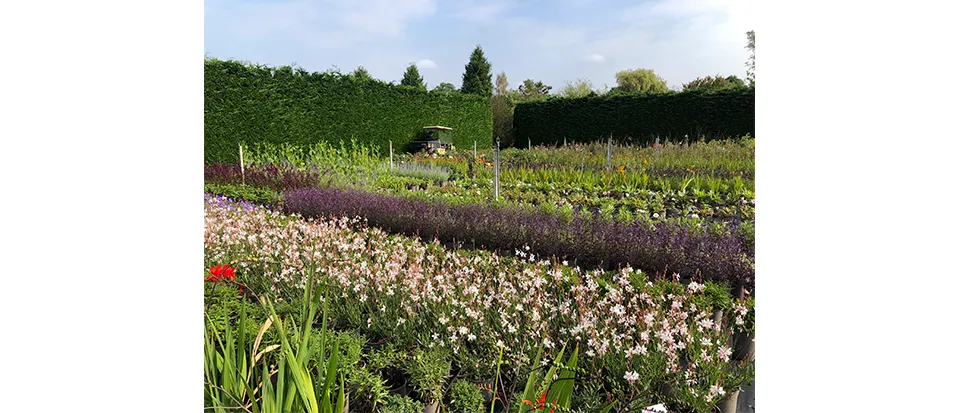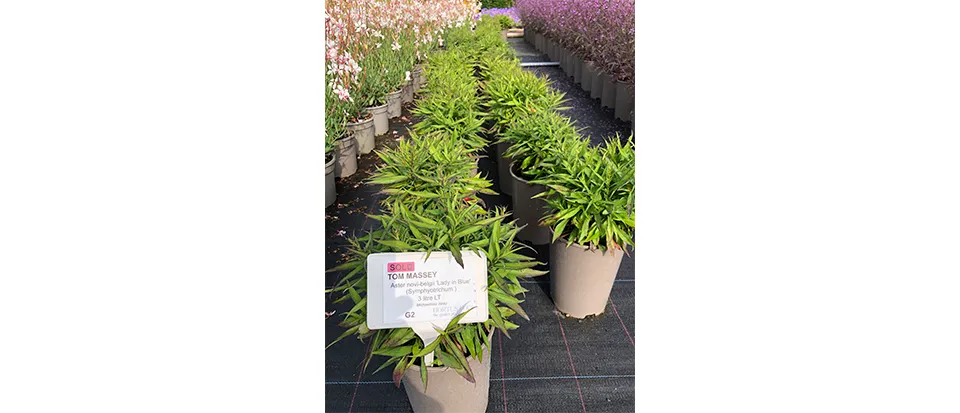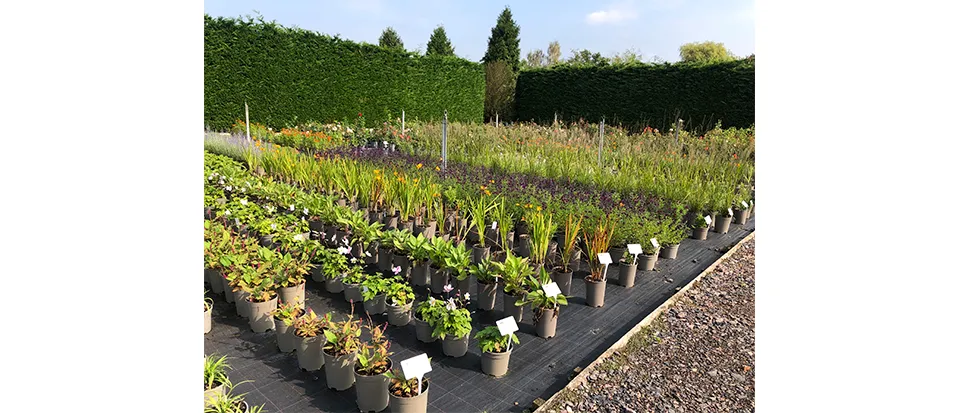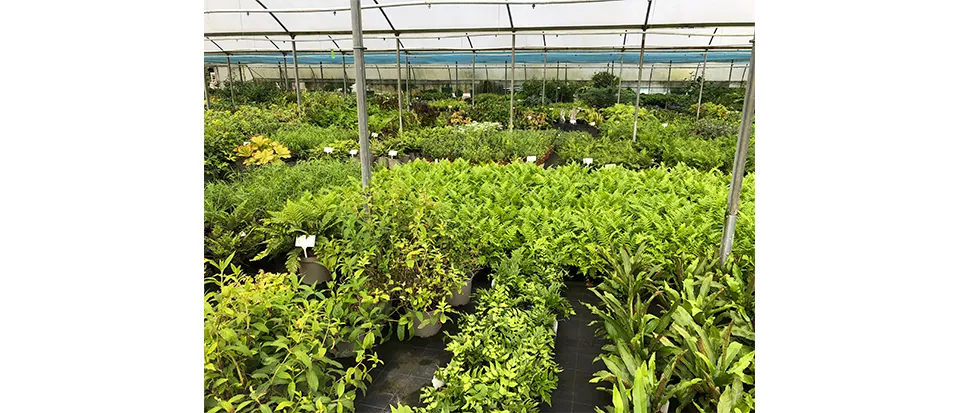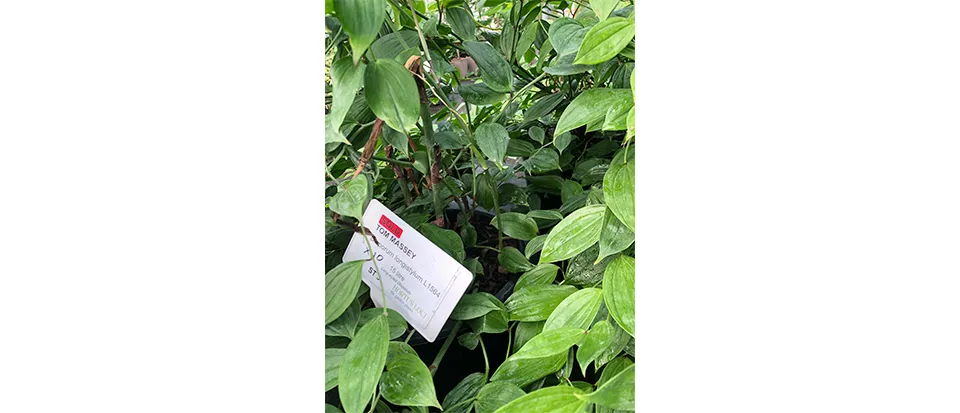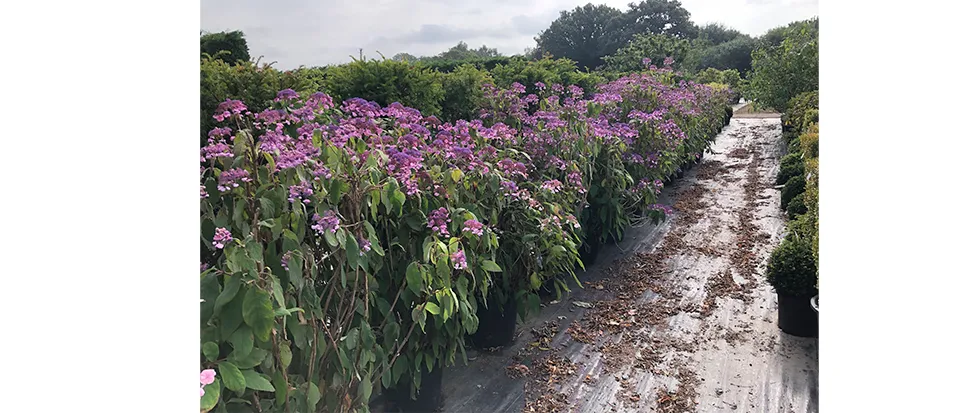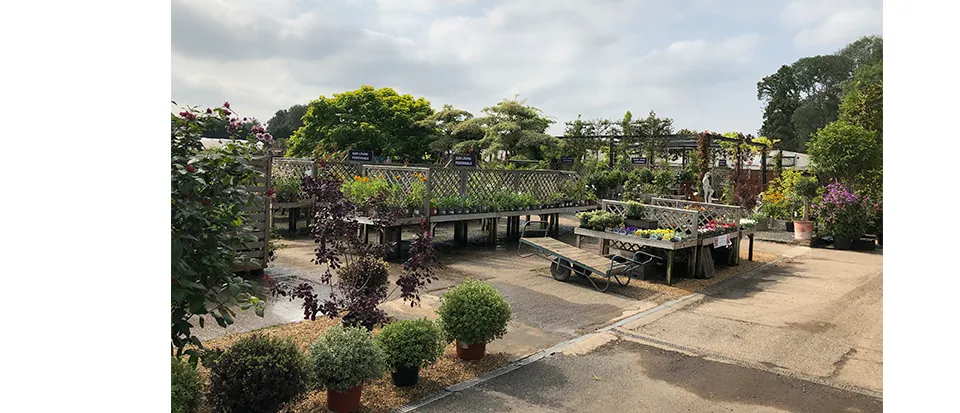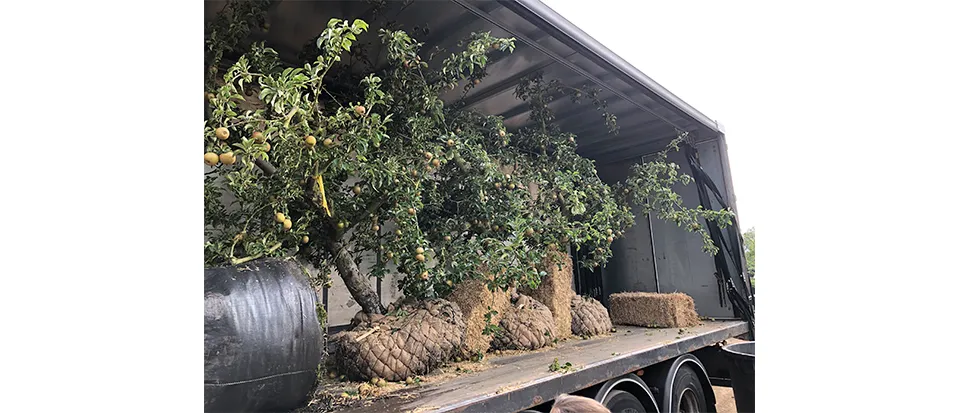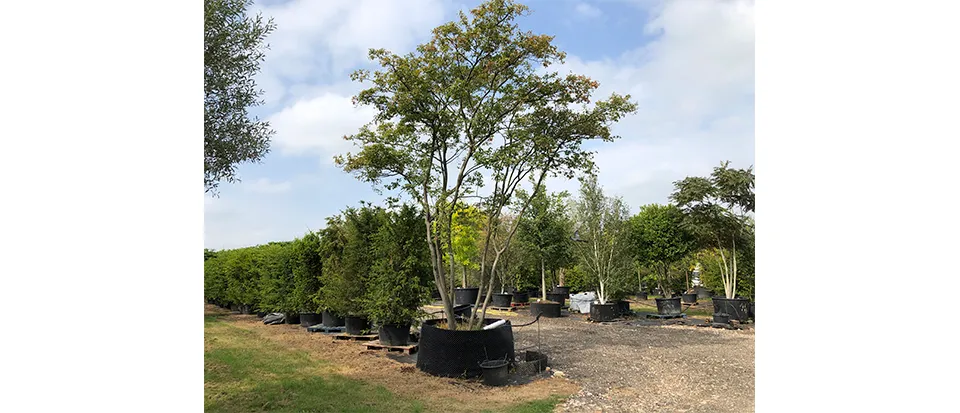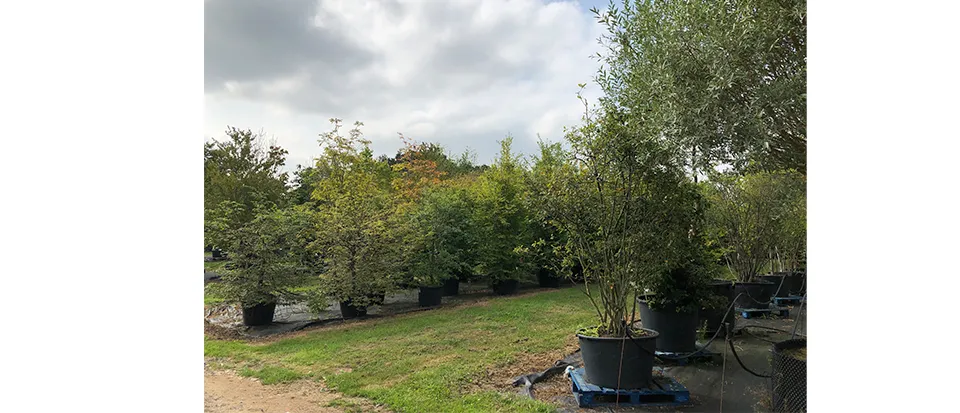Visiting Hortus Loci plant nursery just prior to the RHS Chelsea Flower Show is like peeking behind the curtains on the opening night of a West End show. And despite the show being – at the time of our visit – two weeks away, we’re delighted to find its stars lined up, looking gorgeous and performing brilliantly.
This is the final run up to Chelsea and this year Hortus Loci are providing plants for four Chelsea gardens – including for the very first 100 per cent organic garden, the Yeo Valley Organic Garden with designer Tom Massey. Outwardly, it's hard to tell of the hard work still raging on site but look closely and you’ll see that a huge swathe of the multi-acre nursery is subtle roped off from the public plant displays and garden wares.
Co-owner and director Robin Wallis is our guide as the ropes are lifted and on the other side we discover line upon line of perfect plants, all ready for inspection, each carefully tagged and barcoded, bearing the names of the designer who requires them.
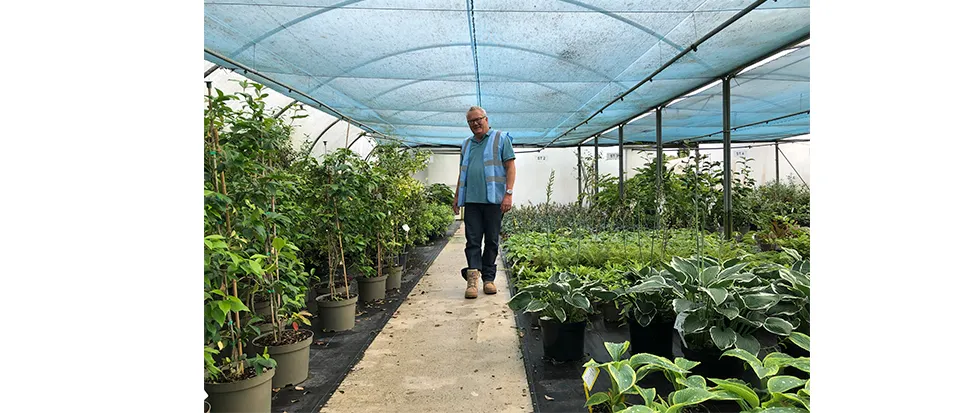
It's an awe-inspiring sight. This is perfect, show-stopping gardening on an industrial scale, as Chelsea designers have – once again - called on Hortus Loci's experience and talent to – literally – deliver the goods for them.
It's the side of Chelsea that is rarely seen. Sponsors come forward, gardens are conceived, designers are commissioned and the gardens are built, then enjoyed by tens of thousands. But none of this can happen without the care, skill and ingenuity of the nurseries that grow and nurture, then expertly deliver the plants that really make the magic happen.
Designers are smart enough not to ask the impossible‚ though inevitably sail pretty close to the wind in this respect. The desire for something ever more impressive, something new and unexpected, or just something large, heavy and impossible to shift never wanes and once again – for Chelsea – it's up to nurseries such as Hortus Loci to deliver.
And – from the evidence of our visit – there may be more than a few gold medals on the way.
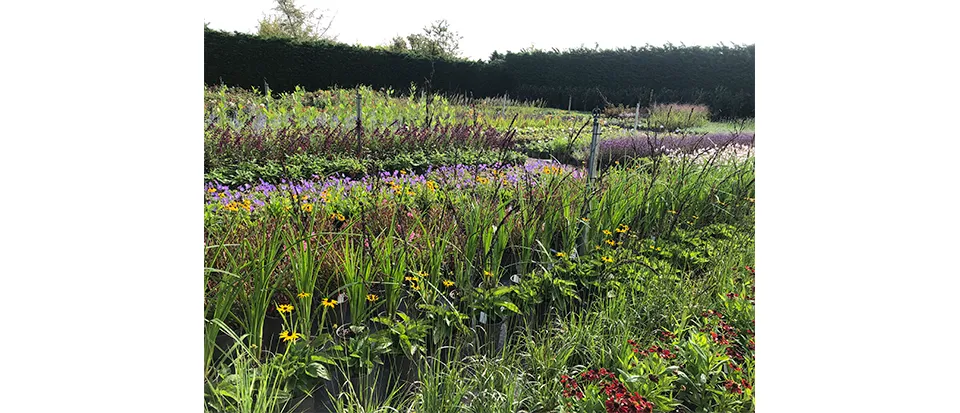
Lines upon lines of perfect waving grasses? They can do that for you. 15-year-old-trees transporting into central London and planting as though they were born in situ? No job too tough. And moving Chelsea from its familiar cycle of the May show to a September show for the very first time? All in a day’s work.
Familiar May planting is out of the window this year and in its place comes a new look for September that Hortus Loci are set to deliver in style.
"The core planting at Chelsea this year is still going to be naturalistic," says Robin. "I don't think I've seen any formal gardens in the designs. There’s more trees, shrubs and hedges… hazels, pines. People are shying away from buxus and using less 'topiarised' looks.
"I think you'll spot a few dahlias at Chelsea these year," he notes.
We wander the isles of perfect plants, running our fingers over the soft, blue spines of Pinus strobus 'Blue Shag'.
"Look at these, they're so tactile, with the cones dangling down," admires Robin. "These are not in a garden yet but I'm sure that when a designer sees them they'll be 'I want one of those!'."

Each designer's plants are arranged in long lines – like soldiers awaiting inspection – their entire crop in large grids with every plant bearing their name.
Are they all watered together? "Long term we'd never have our hydrangeas next to salvias," explains Robin. "But as this all is going to be going to the show shortly, we can hydrate them in this block together. We also gather some plants together in an area so we can bring a designer and say 'Here's your spares' and then try and allocate them fairly depending on what additional plants they might want."
So the designers place their orders but can pick and choose too? "They each have a theme. Therefore we have a stable of plants. So we'll also have back-ups of other things that will knit," explains Robin. "Some naughty designers will try and take a whole batch of something, but that's discouraged."
What about the challenge of getting everything to be perfect at the same time? "Well, if you're a Dutch company you can program hydrangeas to flower any day of the week," comments Robin. "These asters are looking like they're going to be on time. But inevitably August and the first three weeks of September are probably about the most variable weeks of the year, in terms of what weather you can have. It could have been 30 degrees through August, but it's been 20. Next week is set to be 24… But is that 24 and sunny? Or 24 and dull?"
"You can tweak flowering times but you don't want to overdo it. Otherwise you end up with combinations that are impossible. We do the Chelsea 'Hokey Cokey', in the tunnel… out the tunnel. Hoping for no frost, avoiding hailstones," says Robin.
And – the impossible question – just why are some plants further on than others? "It's just when they were potted, the conditions at that time, the size of the plant that went in, how full the liner was… You can buy a 9cm pot and you could get a whisp, or it could be bursting out of the pot."
We wander further. Plants big and small, long grasses, tiny shrubs and in the distance an entire mini forest of trees in the distance and the first flatbed trucks beginning to rumble on site…
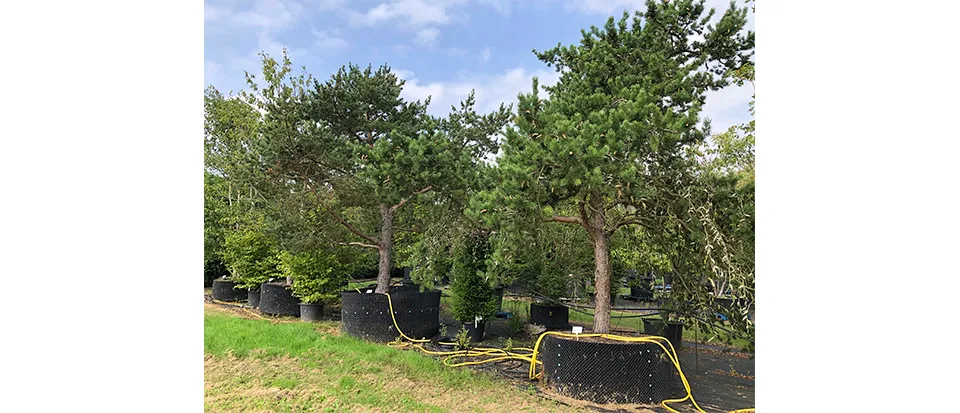
What about the logistics of moving and planting everything? "It's pretty much as you would do your own garden," says Robin. "You plant your structure; your larger shrubs and your hedges go in first and then everything feeds from them. You can't go in later and just plant a tree."
With so much to do, does it go to the wire? "Hopefully not. Most designers aim to be finishing on the Friday before the show because they're getting assessed on the Saturday. The judging is on the Sunday, so they want to be finished before the weekend if they can."
Not a case of a little tweak just before the show opens? "No that's actively discouraged. Planting by torchlight is not a good idea."
So when are the designers arriving to take their pick? "The designers are coming on Monday on Tuesday," Robin explains. And do they… fight for the best plants? "We say, you can have your plants and yes you can have those… but you can't have ALL of those. You can't let the first person come in and buy up all the good stuff. This year we have two gardens that are judged and two that are not judged." So how do you make it fair? "We appeal to their better nature. They might say, 'well why are theirs better than mine?' And we'll explain that they gave us their list earlier and we planted it earlier."
How do the designers go about securing the right number of plants? "Well, Tom [Massey's garden] is a 10m by 10m. But he's got enough for a 10m by 20m on the ground. Whatever spare will go down to Yeo Valley’s garden in Somerset. He's got more because it's organic. He's got a lot of plants to choose from because we can't bring in something last minute as it won't be organic. It's very important. "
And how do the gardeners look after the plants once they're on site? "You can fill a watering can of course, or you can run a long hose – which someone will immediately turn off to put theirs on!’
Wandering the tunnels we happen across a spectacular tropical plant, miraculously in bloom.
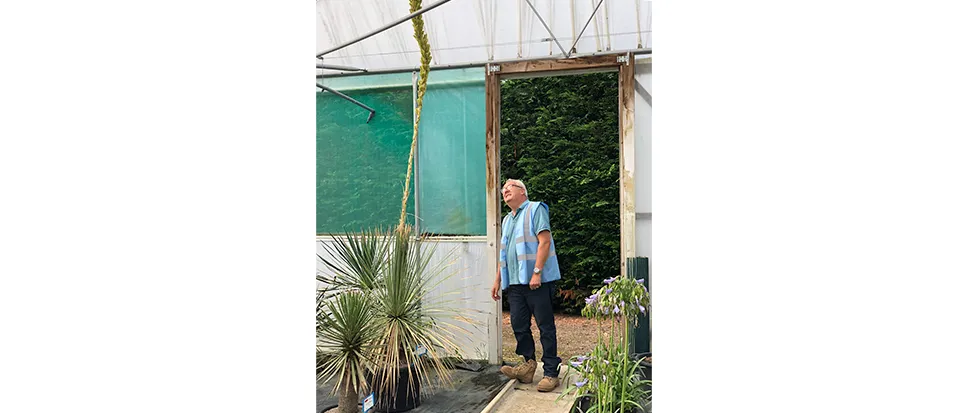
"This is a fine example," notes Robin. "A Dasylirion serratifolium in flower. This is for the RHS garden. They're using plants that are more tolerant of drought. They only flower every now and again so when we saw that this was going to flower we put it aside. We had to keep moving it around the tunnel and as it kept growing and growing…"
It's huge, towering over us all, very nearly touching the roof of the tunnel and gently swaying under its own weight. And ever so slightly creaking… "You're not going to be transporting this to the show are you?" we ask. "We are," confirms Robin. But how? "Longways. On cushions," he explains. All in a day’s work…
For all our Chelsea Flower Show Coverage head to our Chelsea hub
